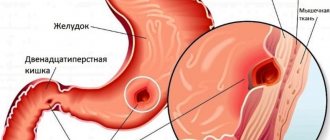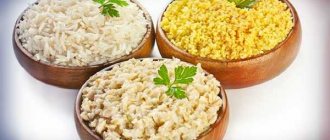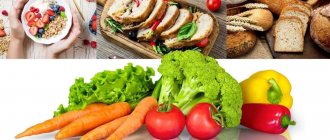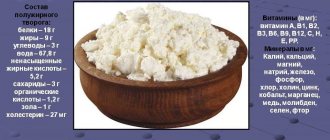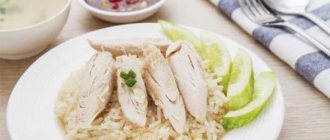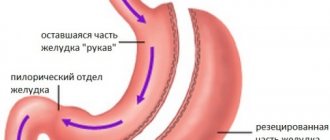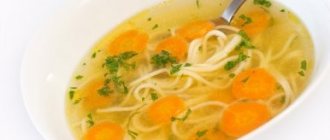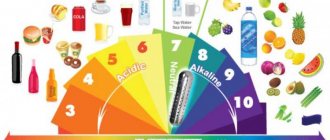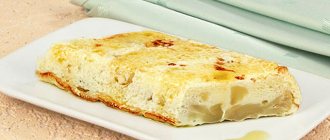In the treatment of ulcerative pathology, nutrition plays an important role. The menu is based on dietary table No. 1. The dishes of this diet are not just healthy, but also tasty. Therefore, you should not think that nutrition for ulcerative defects is bland and monotonous.
A stomach ulcer is not a death sentence. By following a balanced diet, the patient will feel good. Since diet therapy for such a disease is considered the most effective way to treat the disease at any stage of its course.
Diet principles
For gastrointestinal pathologies, it is important to adhere to diet principles based on the following:
- It is not recommended to eat food 3 hours before bedtime. Moreover, this applies to both nutritious meals and snacks;
- You need to eat while sitting at the table. Eating while standing or lying down is prohibited;
- You need to eat slowly, chewing your food thoroughly. Thus, the work of the stomach is facilitated;
- In case of ulcerative defect, it is recommended to adhere to fractional nutrition. The number of meals per day should be from 5 to 6;
- ulcer sufferers need to completely stop smoking and drinking alcohol;
- only fresh products are used for preparing dishes;
- It is recommended to cook food by steaming, stewing or baking;
- Foods for stomach ulcers should not be hot or cold. It is best to consume warm foods;
- Dietary nutrition for ulcer patients involves careful grinding of foods.
A properly selected diet will help defeat the pathology in question and speed up its healing. That's why it's so important to eat healthy food.
Fully or partially limited products
A complete exclusion of vegetables rich in fiber (radish, turnip, white cabbage, beans, peas, rutabaga, fruits with peel) and products with connective tissue (cartilage, veins, skin) is provided.
The following meat products are prohibited: fatty pork, duck, lamb, goose, canned meat and smoked meats. Highly extractive broths and rich vegetable decoctions for soups are excluded. It is necessary to exclude cabbage soup, okroshka and borscht from the first courses. Among vegetables, sorrel, dill, parsley, spinach, and onions are not allowed, as they contain large amounts of organic acids or irritating essential oils. Mushrooms are prohibited as a difficult to digest product.
The consumption of pickled and pickled vegetables, canned vegetables, which cause increased secretion, is prohibited. Difficult to digest are: millet, pearl barley, barley and corn cereals, so they are excluded from the diet for a long time. Fatty fish and canned fish are prohibited.
Remember that fried and hard-boiled eggs are poorly digestible, so it is not recommended to consume them in this form. You should not eat meat sauces, tomato sauce, horseradish, mustard, or pepper that irritate the mucous membranes. Animal fats are also excluded from the diet.
Any fresh bread, butter and puff pastry, dried fruit, chocolate and ice cream are prohibited. You should not consume fermented milk products with high acidity, as they stimulate secretion. For the same reason, sour fruits and berries are excluded. Sour cream is limited in the diet; it is better to use it as an additive to dishes.
Table of prohibited products
| Proteins, g | Fats, g | Carbohydrates, g | Calories, kcal | |
Vegetables and greens | ||||
| vegetables legumes | 9,1 | 1,6 | 27,0 | 168 |
| swede | 1,2 | 0,1 | 7,7 | 37 |
| cabbage | 1,8 | 0,1 | 4,7 | 27 |
| sauerkraut | 1,8 | 0,1 | 4,4 | 19 |
| green onion | 1,3 | 0,0 | 4,6 | 19 |
| bulb onions | 1,4 | 0,0 | 10,4 | 41 |
| cucumbers | 0,8 | 0,1 | 2,8 | 15 |
| canned cucumbers | 2,8 | 0,0 | 1,3 | 16 |
| white radish | 1,4 | 0,0 | 4,1 | 21 |
| turnip | 1,5 | 0,1 | 6,2 | 30 |
| canned tomatoes | 1,1 | 0,1 | 3,5 | 20 |
| horseradish | 3,2 | 0,4 | 10,5 | 56 |
| spinach | 2,9 | 0,3 | 2,0 | 22 |
| sorrel | 1,5 | 0,3 | 2,9 | 19 |
Mushrooms | ||||
| mushrooms | 3,5 | 2,0 | 2,5 | 30 |
Cereals and porridges | ||||
| corn grits | 8,3 | 1,2 | 75,0 | 337 |
| pearl barley | 9,3 | 1,1 | 73,7 | 320 |
| millet cereal | 11,5 | 3,3 | 69,3 | 348 |
| barley grits | 10,4 | 1,3 | 66,3 | 324 |
Confectionery | ||||
| candies | 4,3 | 19,8 | 67,5 | 453 |
Ice cream | ||||
| ice cream | 3,7 | 6,9 | 22,1 | 189 |
Cakes | ||||
| cake | 4,4 | 23,4 | 45,2 | 407 |
Raw materials and seasonings | ||||
| mustard | 5,7 | 6,4 | 22,0 | 162 |
| ginger | 1,8 | 0,8 | 15,8 | 80 |
| ketchup | 1,8 | 1,0 | 22,2 | 93 |
| mayonnaise | 2,4 | 67,0 | 3,9 | 627 |
| ground black pepper | 10,4 | 3,3 | 38,7 | 251 |
| chilli | 2,0 | 0,2 | 9,5 | 40 |
Meat products | ||||
| pork | 16,0 | 21,6 | 0,0 | 259 |
| ham | 22,6 | 20,9 | 0,0 | 279 |
Sausages | ||||
| dry-cured sausage | 24,1 | 38,3 | 1,0 | 455 |
| sausages | 10,1 | 31,6 | 1,9 | 332 |
| sausages | 12,3 | 25,3 | 0,0 | 277 |
Bird | ||||
| smoked chicken | 27,5 | 8,2 | 0,0 | 184 |
| duck | 16,5 | 61,2 | 0,0 | 346 |
| smoked duck | 19,0 | 28,4 | 0,0 | 337 |
| goose | 16,1 | 33,3 | 0,0 | 364 |
Fish and seafood | ||||
| dried fish | 17,5 | 4,6 | 0,0 | 139 |
| smoked fish | 26,8 | 9,9 | 0,0 | 196 |
| canned fish | 17,5 | 2,0 | 0,0 | 88 |
Oils and fats | ||||
| animal fat | 0,0 | 99,7 | 0,0 | 897 |
| cooking fat | 0,0 | 99,7 | 0,0 | 897 |
Non-alcoholic drinks | ||||
| bread kvass | 0,2 | 0,0 | 5,2 | 27 |
| * data is per 100 g of product | ||||
What foods are good for ulcers?
Which foods will be beneficial for stomach ulcers, and which ones should be completely avoided. Let's start with the most nutritious and healthy. This group includes the following:
- greenery. Greens contain a large amount of vitamin K, which promotes healing of wound surfaces and improves blood clotting. Therefore, greens should be included in the diet of an ulcer every day;
- chamomile tea. An effective remedy for combating ulcer formation. In addition, chamomile tea helps inhibit the activity of Helicobacter and has a good anti-inflammatory effect;
- probiotics. Beneficial bacteria normalize digestion and fight the root cause of the ulcer. In addition, bacteria control the secretion of digestive juices. Therefore, it is recommended to consume probiotic yoghurts daily;
- aloe vera juice. This plant has a powerful antibacterial effect. Taking the juice of this culture daily will help block the atypical effect of Helicobacter;
- Wheat grains and oats are indicated to restore tissue damaged by ulcers. These crops are rich in zinc and soluble fiber;
- Olive oil is also useful for ulcers. It contains phenols that linger in the stomach for a long time. Phenols help inhibit the action and spread of atypical bacteria;
- cranberry. One of the healthiest berries, which contains flavonoids and other beneficial substances. Eating cranberries will help speed up the healing of damaged mucosal areas;
- spring water. Drinking a liter of water daily, the patient reduces the negative manifestations of the ulcer and gets rid of toxins.;
- cellulose. This substance accelerates the healing of the defect in question. Therefore, many gastroenterologists recommend eating foods rich in fiber for breakfast. Fiber is found in large quantities in cereals and grains.
By consuming one of the products listed above, a person helps himself to cope with the disease more quickly. However, it is important to remember that if such foods cause discomfort, you should immediately stop eating them.
Recipes for healthy first courses
Today, choosing the most suitable recipes for stomach ulcers is not difficult. Let's look at the most delicious and healthy ones.
Milk-oat soup
To prepare it you will need the following components:
- cereals;
- a glass of milk at the rate of 2 tbsp. spoons of oatmeal per 200 gr. milk;
- water;
- a little butter;
- a pinch of salt on the tip of a knife and sugar to taste.
The oatmeal is poured into water and cooked until fully cooked. Then, grind it in a blender, pour milk into the resulting mass, bring to a boil and simmer for 5 minutes over low heat. Next, butter, salt and sugar are added to the puree soup. Mix everything, cool slightly and serve warm.
Potato and pumpkin soup puree
This dish is prepared using the following ingredients:
- potatoes, 2 units. medium size;
- 200 gr. peeled pumpkin;
- a bunch of greenery;
- sour cream 10% 2 tbsp. l;
- salt to taste.
Pumpkin and potatoes, previously peeled and chopped, are boiled until tender in a small amount of water. Then, the cooked vegetables, along with the water in which they were boiled, are blended in a blender. The mixture is put back on the fire, brought to a boil, sour cream, salt and herbs are added. Mix everything and let cool.
Cauliflower soup
The soup will require the following ingredients:
- carrots, small size;
- broccoli;
- egg;
- herbs and salt to taste;
- sour cream 50 gr.
Peel the carrots and cook until tender. Divide the cabbage into small portions and boil for 5 minutes. Next, mix both components in a blender, add a pre-beaten egg with sour cream, mix everything and cook over low heat for 15 minutes. At the end of cooking, salt and add herbs.
Important: Your diet must include veal, turkey, rabbit and chicken. Properly cooked lean meat will be very useful not only for gastrointestinal pathologies, but also for other organs.
All of the above recipes for ulcers are very useful. But it is important to remember one rule: soups, as well as any other dishes, are consumed only warm.
Authorized Products
The first courses are prepared in potato broth or vegetable broth with pureed vegetables and cereals (semolina, buckwheat, rolled oats, rice). You can eat milk noodle soups, as well as puree soups with the addition of pureed meat (chicken). The egg-milk mixture is added to the soups and seasoned with oil.
Steamed chicken meat
Steamed and boiled dishes are prepared from lean meat. Meat baked in the oven is allowed. They use beef, young lamb and lean pork, chicken and turkey. You can cook steamed cutlets, dumplings, mashed potatoes, aspic, soufflé, meatballs, zrazy, beef stroganoff (only from pre-boiled meat).
Lean fish can be steamed and baked. Prepared in pieces (the skin is first removed) or chopped (bits, cutlets, meatballs, zrazy).
Rice, semolina, buckwheat or oatmeal, vermicelli or thin noodles are added to side dishes and soups. Porridge can be cooked in milk or water, boil well until semi-viscous, buckwheat must be pureed. It is allowed to make puddings from cereals with the addition of cottage cheese, which can be steamed and baked without a crust.
Vegetables (potatoes, beets, young peas, carrots, cauliflower) are steamed and served as a side dish pureed (mashed potatoes, soufflé). Only pumpkin and zucchini can not be pureed. Dill is added in small quantities to soups. Butter and vegetable oil are added to prepared dishes.
Wheat bread may be stale or dried. You can eat dry biscuit or low-fat cookies. Once a week, baked savory pies filled with apples, jam, cottage cheese, as well as meat or fish are allowed.
Dairy products allowed are milk and cream, non-acidic yogurt and kefir, fresh non-acidic cottage cheese and sour cream. You can make lazy dumplings, cheesecakes, and puddings from cottage cheese. Infrequently, mild cheese (preferably grated) and 2 eggs twice a week, cooked soft-boiled or in the form of an omelet, can be introduced into the diet.
Appetizers (for a non-wipe table) can include a salad of chopped boiled vegetables, boiled meat and fish, liver pate, milk sausage, lean ham, jellied fish (in vegetable broth), lean herring and sturgeon caviar.
Sweet desserts are prepared by steaming pureed berries, adding semolina. Sweet berries and fruits can be consumed baked or boiled. They are also used to prepare purees, jelly, jelly, sambuca, and compotes. Milk jelly, meringues, non-sour jam, marshmallows, marshmallows, and honey are allowed as desserts. Drinks include fruit juices, rosehip infusion, tea with milk or cream, and weak coffee with milk.
Table of permitted products
| Proteins, g | Fats, g | Carbohydrates, g | Calories, kcal | |
Vegetables and greens | ||||
| zucchini | 0,6 | 0,3 | 4,6 | 24 |
| cauliflower | 2,5 | 0,3 | 5,4 | 30 |
| potato | 2,0 | 0,4 | 18,1 | 80 |
| carrot | 1,3 | 0,1 | 6,9 | 32 |
| beet | 1,5 | 0,1 | 8,8 | 40 |
| pumpkin | 1,3 | 0,3 | 7,7 | 28 |
Fruits | ||||
| apricots | 0,9 | 0,1 | 10,8 | 41 |
| watermelon | 0,6 | 0,1 | 5,8 | 25 |
| bananas | 1,5 | 0,2 | 21,8 | 95 |
| melon | 0,6 | 0,3 | 7,4 | 33 |
| nectarine | 0,9 | 0,2 | 11,8 | 48 |
| peaches | 0,9 | 0,1 | 11,3 | 46 |
| apples | 0,4 | 0,4 | 9,8 | 47 |
Berries | ||||
| strawberry | 0,8 | 0,4 | 7,5 | 41 |
| raspberries | 0,8 | 0,5 | 8,3 | 46 |
Cereals and porridges | ||||
| buckwheat (kernel) | 12,6 | 3,3 | 62,1 | 313 |
| semolina | 10,3 | 1,0 | 73,3 | 328 |
| cereals | 11,9 | 7,2 | 69,3 | 366 |
| white rice | 6,7 | 0,7 | 78,9 | 344 |
Flour and pasta | ||||
| noodles | 12,0 | 3,7 | 60,1 | 322 |
Bakery products | ||||
| white bread crackers | 11,2 | 1,4 | 72,2 | 331 |
Confectionery | ||||
| jam | 0,3 | 0,2 | 63,0 | 263 |
| jelly | 2,7 | 0,0 | 17,9 | 79 |
| marshmallows | 0,8 | 0,0 | 78,5 | 304 |
| meringues | 2,6 | 20,8 | 60,5 | 440 |
| paste | 0,5 | 0,0 | 80,8 | 310 |
| Maria cookies | 8,7 | 8,8 | 70,9 | 400 |
Raw materials and seasonings | ||||
| honey | 0,8 | 0,0 | 81,5 | 329 |
| sugar | 0,0 | 0,0 | 99,7 | 398 |
| milk sauce | 2,0 | 7,1 | 5,2 | 84 |
Dairy | ||||
| milk | 3,2 | 3,6 | 4,8 | 64 |
| kefir | 3,4 | 2,0 | 4,7 | 51 |
| cream | 2,8 | 20,0 | 3,7 | 205 |
| sour cream | 2,8 | 20,0 | 3,2 | 206 |
| curdled milk | 2,9 | 2,5 | 4,1 | 53 |
Cheeses and cottage cheese | ||||
| cottage cheese | 17,2 | 5,0 | 1,8 | 121 |
Meat products | ||||
| boiled beef | 25,8 | 16,8 | 0,0 | 254 |
| beef liver | 17,4 | 3,1 | 0,0 | 98 |
| boiled beef tongue | 23,9 | 15,0 | 0,0 | 231 |
| boiled veal | 30,7 | 0,9 | 0,0 | 131 |
| rabbit | 21,0 | 8,0 | 0,0 | 156 |
Bird | ||||
| boiled chicken | 25,2 | 7,4 | 0,0 | 170 |
| turkey | 19,2 | 0,7 | 0,0 | 84 |
Eggs | ||||
| chicken eggs | 12,7 | 10,9 | 0,7 | 157 |
Fish and seafood | ||||
| black caviar | 28,0 | 9,7 | 0,0 | 203 |
| salmon caviar granular | 32,0 | 15,0 | 0,0 | 263 |
Oils and fats | ||||
| butter | 0,5 | 82,5 | 0,8 | 748 |
| ghee | 0,2 | 99,0 | 0,0 | 892 |
Non-alcoholic drinks | ||||
| mineral water | 0,0 | 0,0 | 0,0 | — |
| coffee with milk and sugar | 0,7 | 1,0 | 11,2 | 58 |
| black tea with milk and sugar | 0,7 | 0,8 | 8,2 | 43 |
Juices and compotes | ||||
| apricot juice | 0,9 | 0,1 | 9,0 | 38 |
| carrot juice | 1,1 | 0,1 | 6,4 | 28 |
| pumpkin juice | 0,0 | 0,0 | 9,0 | 38 |
| * data is per 100 g of product | ||||
The best main course recipes
Meals for patients with stomach ulcers should be easily digestible. The most useful are purees and soufflés. Let's look at the simplest recipes for ulcers and their preparation techniques.
Rabbit soufflé
To prepare this dish you will need:
- rabbit fillet;
- milk;
- vegetable oil;
- egg;
- salt to taste;
- a pinch of flour.
The fillet is boiled and minced twice in a meat grinder. Add milk and beaten egg. Mix everything well, add salt, add flour and a little herbs if desired. Bake for 45 minutes in the oven at 180C.
Fish soufflé
Prepare a dish from the following products:
- hake fish;
- egg;
- a pinch of flour;
- butter 5-10 g;
- a glass of milk.
The fish is boiled until cooked, then minced 2 times. Milk, pre-beaten egg, flour, melted butter and flour are added to the resulting minced meat. Mix everything thoroughly and salt it, put the finished mixture in a double boiler. Cook for 20 minutes.
Chicken and carrot puree
For meat puree you need to stock up on the following ingredients:
- chicken fillet;
- sour cream;
- medium-sized carrots at the rate of 1 fruit per 100 grams. fillet;
- salt to taste;
- a teaspoon of butter.
Pre-cooked carrots and meat are twisted in a meat grinder 2 times. Salt, melted butter and sour cream are added to the resulting mass. Mix everything well and simmer over heat for 15 minutes, stirring constantly until the mass takes on a puree-like shape.
Chicken and carrot puree
PP meatballs from minced chicken
This very simple and tasty recipe will be a real godsend on proper nutrition. You will need:
- 400 grams of minced chicken. It is best not to use ready-made minced meat, but to cook it yourself.
- 350 grams of zucchini. Three on a grater.
- 30 grams of whole grain flour.
- 1 egg.
- Salt and spices to your taste.
Combine the minced meat with the zucchini, salt and pepper. Add an egg. We make meatballs and put them in a frying pan. Add a little water and simmer for about 20 minutes!
Photo: instagram / pp_receptu_
Pasta and cereals
For stomach ulcers, porridge with pasta is also indicated. Such dishes are the mainstay of the diet. The most useful will be:
- buckwheat;
- rice;
- pearl barley;
- barley porridge;
- oatmeal.
These cereals are rich in carbohydrates and secrete mucus that envelops the mucous membrane, thereby protecting it from the negative effects of gastric juice. But corn grits and semolina are contraindicated in the first days of exacerbation of the pathology. Because these cereals help increase the production of hydrochloric acid.
Important: The menu for ulcer sufferers should include porridge. To prepare such food, you need to soak the cereal in the evening for 8-10 hours. In the morning, the cereals are thoroughly washed again and only then boiled.
As for pasta, they are allowed to be consumed without restrictions. The main thing is to strictly follow the cooking technique. For example, if the cooking time is indicated on the package, it needs to be increased by a couple of minutes for those with ulcers.
Vegetable salads
Vegetable salads must be present in the diet of patients suffering from ulcerative pathology. The following vegetables are considered the most useful:
- carrot;
- beet;
- cauliflower;
- pumpkin;
- zucchini.
These fruits are allowed even during an exacerbation, but only in boiled form. But at the time of remission, they can be consumed raw, seasoned with a small amount of olive oil or low-fat sour cream and lightly salted.
Important: Boiled vinaigrette beets and carrots are very useful for ulcerative pathology. These vegetables help normalize stool and have a beneficial effect on the gastrointestinal tract.
As for vinegar, spicy seasonings and mayonnaise, these dressings should be avoided. It is advisable to completely exclude them from the diet even during the period of attenuation of the disease. In addition, you can add a little chopped parsley or dill to such food. These plants are allowed not only during remission, but also at the time of exacerbation of the ulcer, but in small quantities.
What soups are allowed to be consumed?
Not all types of first courses can be included in the diet of people suffering from ulcers.
For this disease, it is recommended to consume soups made from weak broths from:
- vegetables;
- croup;
- fish;
- lean meats.
It is recommended to consume soups made from vegetables and meat.
During the period of remission, you can periodically include main courses prepared with low-fat milk in your diet. The consistency should be slimy and puree-like. The first ones are made from cereals, which release starch when cooked. When preparing the latter, after boiling, the ingredients are crushed to a homogeneous mushy state.
First courses in the postoperative period
During this period, it is especially important to follow a diet. In the first few days after surgery, you may take small portions of vegetable broth. For at least 2 weeks, it is recommended to consume only mucous and puree soups that do not contain solid ingredients that can cause sutures to come apart.
Dishes must be rubbed through a sieve or crushed in a blender. Soups with solid pieces can be introduced into the diet only with the permission of a doctor.
Healthy desserts
Many confectionery products are prohibited for ulcerative defects. It is clear that a logical question arises whether these products can be replaced with gentle products. For ulcerative pathology, the following sweet foods are allowed:
- honey, preferably acacia;
- agar This dessert is a carbohydrate mixture obtained from seafood in the form of a jelly;
- marshmallows and marshmallows made from natural ingredients.
In addition to these healthy delicacies, you can prepare your own dessert.
Baked apples
Required:
- 6 medium sized apples;
- sugar or powdered sugar.
Wash the apples and make an incision in the tail area so that the core is partially removed. Then, 0.5 teaspoons of sugar or powder are poured into each fruit, the apples are placed on a baking sheet and baked for 40 minutes in the oven at +180C.
Cottage cheese pudding
One of the most delicious and nutritious desserts allowed for ulcer sufferers. To prepare the pudding you will need:
- skim cheese;
- semolina at the rate of 1 tbsp. spoon for 100 gr. cottage cheese;
- a glass of milk;
- egg;
- sugar to taste;
- butter for greasing the baking sheet.
First, take semolina and pour milk, stir well and let it brew for 20 minutes. At the same time, beat cottage cheese with egg and sugar in a blender. If desired, you can add some raisins. If you plan to add dried fruits, you need to pour boiling water over them for 5-7 minutes, then remove them and add them to the curd mass. Next, semolina with milk is added to the future pudding, mixed and placed on a greased baking sheet. Baking time 45 minutes at 180C.
Important: Curd casserole is also useful for ulcers. It is prepared from apples, low-fat cottage cheese and semolina.
If the pathology in question is at the attenuation stage, you can consume low-fat cottage cheese in its pure form in small quantities. Instead of sugar, add a little honey. Such food is a valuable source of protein. In addition, cottage cheese has a positive effect on the functioning of the digestive system and protects the mucous membrane from the negative effects of gastric secretions.
Apple soufflé
An excellent alternative to rich desserts is apple soufflé. It is prepared as follows:
- apples;
- egg whites at the rate of one white per apple;
- a glass of milk;
- sugar to taste.
The apples are washed, peeled, and the resulting pulp is twisted in a meat grinder. Whipped whites with sugar and milk are added to the finished puree. Everything is mixed, laid out in a thin layer on a baking sheet and baked in the oven for 15 minutes at a temperature of +180C. Then, you need to carefully remove the baking sheet and check the soufflé, if necessary, extend the baking time by 10-15 minutes. Before serving, apple soufflé can be sprinkled with powdered sugar or sour cream.
Dietary steamed fish meatballs
You can also cook meatballs from minced fish in a double boiler.
- 400 grams of fish. We take lean white fish. Walleye is ideal.
- 1 onion. Grind.
- 1 carrot. Grate on a fine grater.
- Favorite spices.
- 2 tablespoons soy sauce. You don't need to add salt, as the sauce itself is salty.
Mix all the ingredients and place in a double boiler.
Which meatball recipe did you like best? Be sure to prepare yourself this delicious dish!
What foods are contraindicated for ulcers?
Ulcerative pathology is very insidious and dangerous, therefore, in order not to provoke complications, the patient needs to completely exclude certain food groups from the diet. These include the following:
- carbonated drinks and alcohol;
- strong tea and coffee. These drinks promote the active production of hydrochloric acid and disrupt the normal digestion process;
- Fresh bakery products and any products made from butter dough are prohibited;
- meat sick, okroshka, borscht and kharcho soup are contraindicated;
- an ulcer sufferer should also avoid fatty meats such as goose, pork, lamb and duck;
- During an exacerbation, you need to give up fermented milk products, including hard cheeses. But at the attenuation stage, fermented baked milk and kefir with a small percentage of fat content will be useful;
- all spices, mustard, smoked meats, canned food, ketchups, tomato paste, onions, garlic, horseradish and all spicy snacks are excluded from the diet;
- spices and salt are shown in limited quantities;
- you need to completely avoid legumes, spinach, turnips, white cabbage, rutabaga, fresh cucumbers and radishes.
In addition, it is important to adhere to the cooking technology for the ulcer. All dishes are steamed, boiled, stewed or baked in such a way that a golden crust does not form. But fried foods are strictly prohibited.
Another question that interests many people suffering from this pathology is whether chicken liver is allowed for stomach ulcers. Chicken liver is very healthy. However, it contains large amounts of cholesterol. Therefore, consuming this product can provoke an excess accumulation of cholesterol, which absolutely cannot be allowed in case of an acute ulcer.
But with the onset of attenuation of the pathology, chicken liver will be useful. But it is important to remember that liver is consumed cooked only in boiled or stewed form.
General rules
Damage to the mucous membrane of the stomach or duodenum with the formation of ulcers is associated with the predominance of aggressive factors (pepsin, hydrochloric acid, bile acids) over the protective factors of the mucosa itself.
Helicobacter pylori plays an important role in this, causing inflammation of the mucous membrane and destroying local protective factors. The most characteristic symptoms of a peptic ulcer are pain in the upper abdomen on an empty stomach (in the morning, between meals and at night). Symptoms of a hunger ulcer force the patient to eat more often, including at night; the pain subsides 30 minutes after eating. Less specific for peptic ulcers are loss of appetite, nausea, vomiting, feeling of fullness, heartburn and weight loss.
A patient with a peptic ulcer should be aware of life-threatening complications.
- Ulcer perforation is the formation of a through defect in the wall of the stomach or duodenum. A perforated ulcer is one of the most dangerous complications, since the contents of the stomach enter the abdominal cavity and cause diffuse peritonitis .
- Bleeding - manifested by stool turning black.
- Malignancy.
Poor diet and consumption of food that irritates the gastric mucosa is the cause of peptic ulcer disease and its exacerbations, along with alcohol consumption, smoking and nervous tension. Therefore, therapeutic nutrition and diet are an integral part of the treatment of this disease.
The purpose of a therapeutic diet is to create conditions for the elimination of pain, dyspeptic symptoms and the healing of ulcers. The diet can reduce the activity of the stomach acid factor, reduce its excitability and stimulate regeneration processes. Taking food at the same time and in small portions has a gentle effect on the mucous membrane and helps eliminate inflammation.
It is difficult to unambiguously answer the question of what diet is needed for a stomach ulcer, since it differs during different periods of the disease. When treating peptic ulcers with high acidity, different treatment tables are sequentially prescribed:
- No. 1A - with maximum limitation of various types of effects (mechanical, chemical and temperature) on the stomach, for a period of 6-10 days;
- No. 1B - with a mild limitation of all types of aggression on the stomach, the average treatment time is up to two weeks;
- №1 - with moderate stomach sparing, for up to six months.
Rice porridge is quickly absorbed and digested by the stomach
However, we can say for sure that the therapeutic diet for gastric ulcers at any stage of the disease involves the exclusion (to one degree or another) of strong stimulants of gastric secretion and irritants of the mucous membrane. Preference is given to foods that quickly leave the stomach (mushy and liquid foods).
A gentle regimen is facilitated by regular and small meals - it facilitates the digestion and absorption of food. Consistent prescription of therapeutic diets with a gradual expansion of the list of permitted products and methods of their processing consolidates the obtained therapeutic result, gradually prepares the gastrointestinal tract and prevents exacerbation in the future.
Proper nutrition for stomach ulcers creates conditions for eliminating inflammation and repairing the mucous membrane. It should exclude irritants to the mucous membrane.
Mechanical irritation of the gastric mucosa is caused by:
- a large amount of food at one time;
- taking a large amount of coarse fiber contained in radishes, turnips, beans, gooseberries, grapes, currants, raisins, dates, bran bread;
- consumption of stringy meat, cartilage and skin of poultry.
Chemical irritation of the mucous membrane is caused by products:
- having an acidic environment (sour foods, sour unripe fruits);
- stimulating gastric secretion: broths, strong infusions of vegetables, spices, fried foods, canned food, smoked meat and fish products, tomato sauce, pickled and pickled vegetables, meat and fish stewed in their own juice, hard-boiled eggs, fermented milk products; rye bread, butter dough, whey, overheated edible fats; skim milk, strong tea, coffee, alcohol, carbonated drinks, raw vegetables, sour fruits and berries.
Thermal effects are caused by excessively cold or hot food.
In this regard, the diet should include warm, non-rough, pureed dishes that have a weak juice effect: milk, eggs, milk porridge, boiled meat (in variations). Milk protein promotes scarring of the ulcer, and frequent meals with the exception of rough foods cause mechanical sparing of the mucous membrane.
Diet for stomach ulcers during exacerbation
During this period, all factors of adverse effects on the mucous membrane should be limited as much as possible. This nutritional option is prescribed for 6-8 days, since it is not balanced (the lower limit of the norm, proteins and fats, carbohydrates are significantly limited). However, during bed rest, the diet provides the physiological needs of the body.
Nutrition during an exacerbation has the following principles:
- Six meals a day are provided, and the amount of food taken at one time is limited. Eating gentle food at the same time helps reduce inflammation.
- Considering that patients are on bed rest, food is prepared only in liquid form (possibly in mushy form) and jelly form. This diet helps the repair process of ulcers and reduces the activity of the inflammatory process. The porridges are first boiled, then pureed and diluted to the desired state with water or milk.
- Any pathogens of secretion (all broths, sour drinks, fermented milk products) and irritants of the mucous membrane (rough foods, all vegetables, rough cereals) are excluded.
- Difficult to digest foods (mushrooms, tough meat with fascia, tendons and skin in poultry and fish) are excluded.
- Any bread is not allowed.
- Only slimy soups made with water or milk made from oatmeal, semolina, or rice are allowed. Mucous soups are mechanically gentle on the stomach. Essentially, these are decoctions obtained by long-term cooking of cereals. They are filtered, but not ground, lightly salted and butter is added. To speed up cooking, soups are prepared from baby food flour or ground cereals.
- Cereal dishes (from buckwheat, oatmeal, rice) are prepared in the form of liquid porridge with milk, pureed and butter is added to the finished dish.
- Among dairy products, milk, calcined cottage cheese, milk jelly and cream (in soups) are allowed. Whole milk - 4 glasses per day.
- Soft-boiled eggs or steam omelet are allowed (up to 2 pieces).
- Excessively cold and hot dishes are excluded. Hot dishes should have a temperature of 50-55°C, and cold dishes should have a temperature of 15-20°C. Cold food slows down the regeneration processes of the mucous membrane, and too hot food also has an adverse effect on the mucous membrane.
Thus, this diet creates all the conditions for reducing inflammation, since it does not contain roughage and foods that irritate the mucous membrane. Reducing the volume of food taken at one time and split meals leads to mechanical sparing. A sufficient amount of protein is necessary for the ulcer to heal faster.
Nutrition for a bleeding ulcer
For ulcer bleeding, a specialized diet is used. If indicated, the patient may receive parenteral nutrition until bleeding stops. After its cancellation, you are allowed to take 200 ml of liquid cold food per day. This can be milk, jelly, jelly, cream, after a while they add sour cream and raw eggs, slimy soups. As a result, the patient is transferred to Table No. 1A with expansion to the option of Table No. 1 .
To combat anemia , a diet with a high protein content (140-150 g) is prescribed, while fats are somewhat limited (60-70 g). It is necessary to enrich the diet with iron, cobalt, copper, manganese, cyanocobalamin, so it is advisable to introduce dishes with liver and yeast. If you are feeling satisfactorily, after 1.5 months, unchopped food with the addition of fresh vegetables and fruits is allowed. Plums, apples and peaches can also be eaten ungrated.
What nutrition is indicated when the process subsides and recovers?
This is a moderately gentle, physiologically complete nutrition within the limits of Table No. 1 . It must be followed for a long time (up to six months), since peptic ulcer disease requires long-term dietary nutrition. It is also necessary to carry out anti-relapse treatment in parallel.
The absence of strong irritants in food at any stage of the disease (meat, mushroom broth, fish soup, strong tea, fried foods, coffee, carbonated drinks, marinades, mustard, alcohol) creates conditions for successful treatment and a long disease-free period. A stepwise expansion of the diet prepares the gastrointestinal tract for the transition to a common table, in which it is still worth limiting too hot, spicy, very hot dishes and alcohol, and maintaining regular food intake.
If the patient has a peptic ulcer and concomitant pancreatitis , then the diet is almost the same, but the amount of protein consumed increases to 140-160 g, since the essential amino acids of proteins are necessary to prevent the negative effects of the enzyme trypsin . The amount of fat must be reduced to the lower limit (80 g), including eliminating high-fat dairy products.
Usually, if patients feel well, it becomes difficult for patients to follow Diet No. 1 and the period of stay on it is reduced to 2-3 months. The diet is expanded, non-purified food is introduced, and raw vegetables and fruits are added. These include sweet plums, peaches, nectarines, apples, and vegetables - tomatoes. In the future, when carrying out anti-relapse treatment in the autumn-spring period, you should again switch to gentle nutrition for 2-4 weeks (first Table No. 1B, and then No. 1).
There is no need to do anything to lose weight if you have an ulcer. First of all, because during an exacerbation the patient’s appetite worsens, he vomits after eating, and he is afraid to eat normally. In addition, the prescribed therapeutic nutrition itself promotes weight loss, since the list of permitted foods is very limited (especially Tables 1A and 1B, they have a reduced calorie content) and frying foods in oil is excluded for a long period.
Sweets and other simple carbohydrates are limited because they increase the excitability of the nervous system. If you exclude smoked foods, flour, fatty foods, and alcohol from your diet, then the issue of weight loss will disappear. It is enough to follow the recommendations regarding nutrition, and it will decrease.
It is absolutely forbidden to fast if you have gastrointestinal diseases. Adding spices (ginger and cardamom) to drinks, which speed up metabolism, is also contraindicated. Any spices are prohibited as they provoke the release of digestive enzymes. Also, the patient should not refuse white bread in favor of black bread, which is always recommended during diets. As you can see, the desire to lose weight can cause an exacerbation.
Diet for gastric ulcer during unstable remission:
- Avoid as much as possible foods that increase secretion (rich broths, spicy, pickled, smoked and fried foods, alcoholic drinks, coffee, tea, carbonated drinks).
- Avoid irritating foods (citrus juices and sour fruits, cranberries, tomatoes, onions, peppers, garlic, turnips, radishes, coffee, tea, ginger, chocolate, alcohol) and foods that increase gas formation.
- Reduce the amount of food consumed - a fist-sized portion at a time.
- Frequent meals (5-6 times a day). Last dose no later than 3 hours before bedtime.
- Eat foods warm, since cold foods take a long time to digest, and hot foods irritate the mucous membranes.
- Increase protein intake and reduce the amount of fat (fatty pork, goose, duck, lamb, cream, butter, cream cakes).
- The main methods of cooking are boiling, stewing, and baking in the oven, starting from the third week of exacerbation.
- Do not mix products that do not combine (proteins and carbohydrates) to avoid rotting and fermentation.
- Include bananas, wild strawberries, cherries, blueberries, potato juice, oat broth, and sweet apples in your diet.
- During stable remission, nutrition is close to that of a healthy patient, but with restrictions on spicy foods.
By following these dietary recommendations, eliminating smoking, which increases the risk of relapse, and drinking alcohol, you can achieve a long-term (several years) relapse-free course of the disease. Patients suffering from peptic ulcers should avoid taking non-steroidal anti-inflammatory drugs.
Recommendations from gastroenterologists
Dietary nutrition is the most important component of therapy aimed at healing from ulcers. But do not forget that the cause of the development of the defect is the atypical action of Helicobacter. Therefore, dietary restrictions alone cannot be used; the patient must undergo drug therapy, including:
- antibiotics;
- anti-secretory drugs;
- medications that relieve unpleasant symptoms.
Drug therapy is carried out in combination with diet. This approach will speed up recovery and improve the patient’s quality of life.
And in conclusion, we note that by adhering to diet and other medical prescriptions, a person will be able to prolong the period of remission and prevent the worsening of the pathology.
Dietary meatballs in a slow cooker
You can cook meatballs not only in the oven, but also in a slow cooker. In principle, the recipe for pp meatballs can be anything. The main thing to remember is the following rules:
- There is no need to fry the meatballs in a multicooker, just pour a little water on the bottom of the multicooker and set the stewing mode.
- if you want a complete lunch or dinner, then you can put any vegetable mixture on the bottom of the multicooker, add a little water and put meatballs. This dish will be an excellent solution on a diet.
